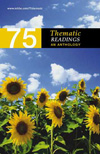
Leslie Marmon Silko |  |
Leslie Marmon SilkoLeslie Marmon Silko, "Language and Literature from a Pueblo
Indian Perspective" Leslie Marmon Silko (1948- ) was born in Albuquerque, New Mexico and
earned a B.A. from the University of New Mexico in 1969. She's taught
at the University of Arizona, and writes novels, stories, essays, and
poems. Silko's books include the novel Ceremony (1977), for which
she won the American Book Award, a collection of poems and stories called
Storyteller (1981), the novel Almanac of the Dead (1991),
and Yellow Woman and a Beauty of the Spirit: Essays on Native American
Life Today (1996). She has also won a National Endowment for the Arts
fellowship, and a MacArthur Foundation grant. Silko
has contributed to periodicals such as New Mexico Quarterly and
Chicago Review. "Language and Literature from a Pueblo Indian
Perspective" originated as a speech about nonlinear language
patterns, appeared first in print in 1979, and is reprinted in Yellow
Woman and a Beauty of the Spirit. | QUESTIONS FOR DISCUSSION | CONTENT - Why are written speeches and statements "highly suspect"
among the Pueblo people?
- What is the central element of the Pueblo theory of language?
- Explain the relationship between Pueblo language and geography.
- How had things changed at the author's high school when she returned
there after college? What hadn't changed?
- According to the author, what is the main relationship between
listener and story? What implications does this relationship have?
- What have traditional anthropologists and ethnologists not usually
considered when studying Pueblo stories? What does Silko say this tendency
has led to?
- In story Silko recounts, what happened to the Vietnam veteran's
red Volkswagen Beetle? How did he feel initially? Later? Why?
STRATEGY AND STYLE - To what does Silko compare Pueblo speech using a simile in the
first paragraph? How does this fit in with her ideas of structure and
meaning in Pueblo language?
- How does Silko read her audience and prepare them for what she
thinks will probably be an unconventional speech from their point of
view?
- Discuss this work as either a comparison/contrast essay or as a
definition essay. Why did you pick one mode over the other to discuss?
- Describing the impact that Bureau of Indian Affairs has had upon
many Pueblos' interaction with the English language, Silko offers a
story from her school days to bolster her point. What is effective about
this approach? Explain.
- Silko ends this piece by "getting back to one of the original
statements" she made at the outset. How does this conclusion fit
in with both the simile you discovered above and with the author's comments
about the nonlinear nature of her own remarks?
| ENGAGING THE TEXT | - How important are stories to you? How has this relationship changed
over time? Have the mass media you enjoy now changed compared to when
you were a child? Did this piece give you any new ways to approach stories?
- Calling upon your family history, write down an anecdote you particularly
like. Send one version to a family member via email, and tell it to
another either in person or on the phone. Ask for comments and corrections.
(Saying it's for a school project might enhance cooperation.) What did
the people comment upon? Did they correct anything? How can you connect
this exercise with your reading?
| SUGGESTIONS FOR SUSTAINED WRITING | - How can negative stories be used in a positive way, according to
Silko? How does this process work on an individual level? A family level?
A community level? Explain with specifics from your text.
- Tape record yourself explaining a simple process: making scrambled
eggs, finding a book in the library, something like that. Then, take
your recording and transcribe it. What differences about the two forms
of communication did you discover during the writing process?
| FOR FURTHER RESEARCH | Pick the ethnic group you associate yourself with most closely, and do
some research about stories associated with that group. Choose the timeframe
you feel most comfortable with if you're having trouble narrowing your
topic. How can you categorize these stories? What might they say about
your ancestors and relatives? How can you compare them with the stories
related in your text? | WEB CONNECTION | Are you interested in learning more about the topic of multicultural
education? The National Clearinghouse for English Language Acquisition's
website offers much detailed information
about things like finding out about state resources and promoting cultural
understanding in schools. | LINKS | Biographical Here's a very good general start
page about Silko at Voices From the Gaps. There, you'll find
a photo, a biography, three bibliographies, and some links to get your
research going. This page
contains a Silko biography, some student comments, and links. If you
had to pick this source or the one above to use in a research paper,
which one would it be? Why?
Bibliographical Silko conducted this interview
when she was touring Germany promoting her novel Almanac of the Dead.
In it she discusses her writing career, oral tradition, and the Germanic
view of the American frontier. Intrigued about Almanac of the Dead after reading the interview?
Read an excerpt or two from the novel by clicking here.
Cultural Interested in putting this author's work into a cultural and social
context? Here are some Native
American author links from Voices of the Shuttle that are
sure to provide a lot of help. For further information, but on a cautionary note: This is an article
from the Smithsonian Institution about avoiding Native American stereotypes. If you'd like some starting points to research governmental and academic
aspects of bilingual education, this "Electronic
Textbook" will help you on your way. After touring the site,
answer this question: What is the nature of Native American bilingual
education in the U.S. today? How can you find out more about it?
|
|
|
|